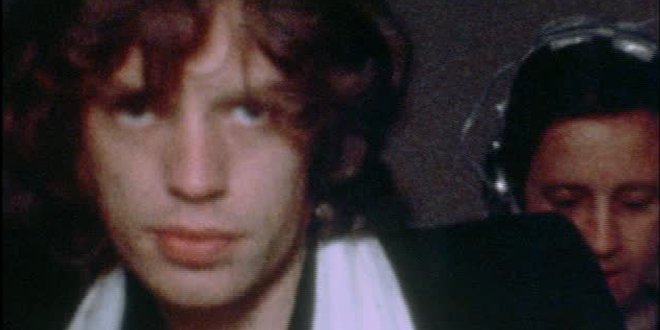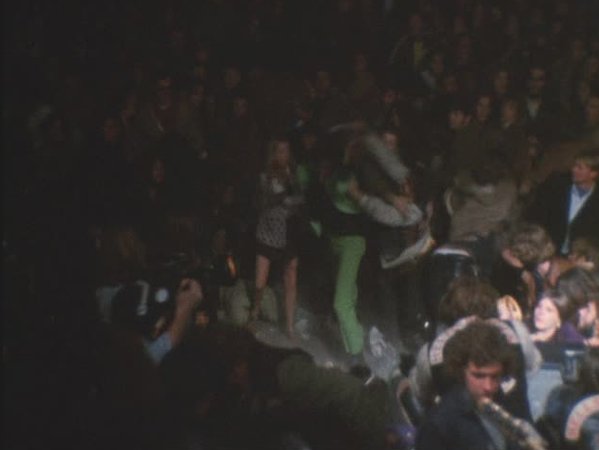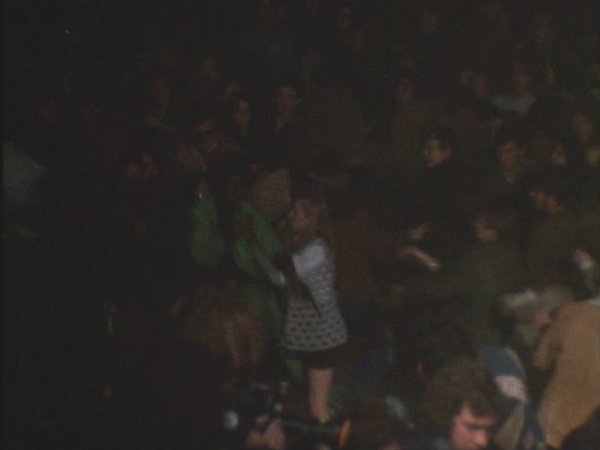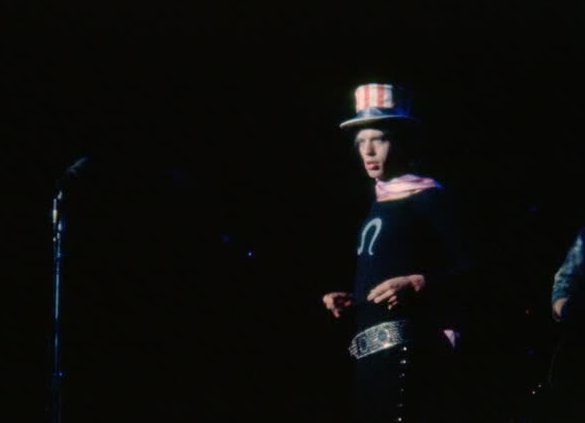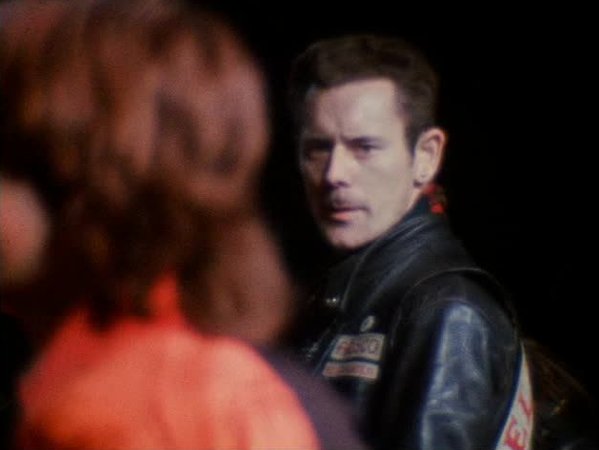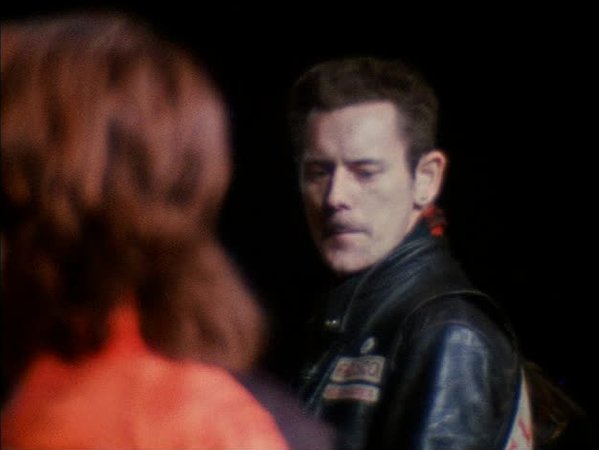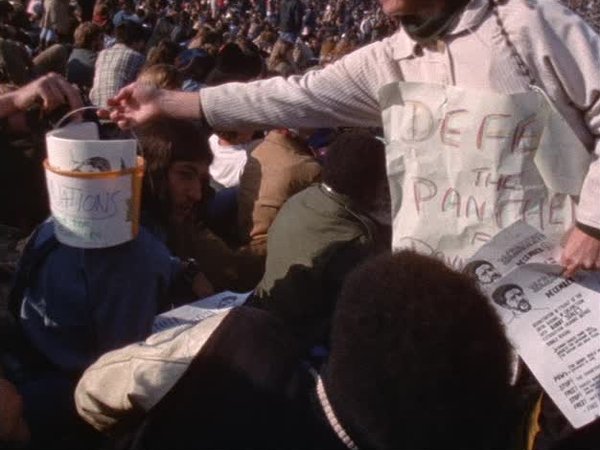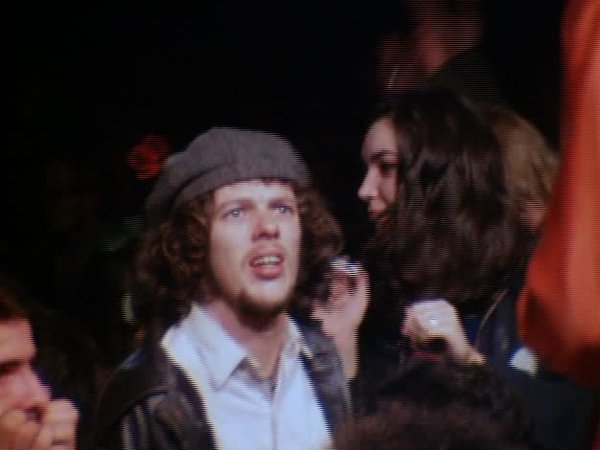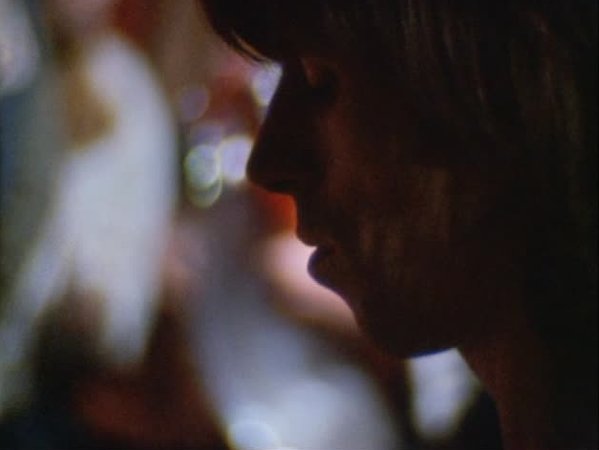Spoiler Scale (How spoilery is this article on a scale of 1 to 10?): 8
“Time: the final month of the decade that spawned that unprecedented and probably insupportable contradiction in terms, mass bohemia, popularly known as the counterculture. Occasion: On America’s ultimate frontier some three hundred thousand bohemians come together with their chosen images, five formerly lower- to middle-class Englishmen who fuse Afro-American music with European sensibility. Denouement: An Afro-American bohemian is murdered by a lower-class white Hell’s Angel while the Englishmen do a song called ‘Sympathy for the Devil.'”
– Robert Christgau, “The Rolling Stones: Can’t Get No Satisfaction,” Newsday (1972)
In actuality, the song that the Rolling Stones were performing at the Altamont Free Concert at the time of the homicide was the far less metaphorically convenient “Under My Thumb” (albeit a dirge-like take, with the outro morphing from “It’s alright” to “I pray that it will be alright”). But the self-proclaimed Dean of American Rock Critics doesn’t let the truth get in the way of a good story, and the story is that Altamont marked the end of an era. That is, if Woodstock was the pedestal upon which the media placed the counterculture, Altamont would be the hammer with which the media would knock it down. But as Albert and Robert Maysles’ documentary of the final leg of the Stones’ 1969 U.S. tour would show-don’t-tell, the entire narrative of the late ’60s was more complicated than any of the partisan commentators and pithy elites would have us believe, and the Stones proved to be the perfect foil for that predominant narrative.
To begin with the documentary’s culmination, this enigmatic image of a knife in arc fit squarely into the media’s tragedy of social justice: a racist Hell’s Angel (Alan Passaro) stabbing said bohemian African American (Meredith Hunter) right in front of his pretty, young, white girlfriend (Patty Bredahoft). Yeah, we all know how it is, man.
But that’s not really how it was. As it turns out, back in the editing room, the Maysles brothers – and arguably the true auteur of this particular masterpiece, editor Charlotte Zwerin – discovered this frame that preceded it.
Although not included in the documentary itself, the Maysles’ footage of Hunter brandishing a .22 pistol was key to Passaro’s acquittal on homicide charges, as was the fact that Hunter was on meth and according to his own girlfriend, had returned with the gun to the front of the stage in a rage following a prior altercation with the Hell’s Angels.
In more ways than one, the Maysles’ documentary is a remarkably potent time capsule; and yet 45 years on, their dogged insistence on avoiding explication and the fleeting pop nature of their subject matter also begs some contextualization. In the early summer of 1968, the Stones released the single “Jumpin’ Jack Flash”, the performance of which, quite appropriately, opens this documentary. While only six months had elapsed since the release of the Stones’ last attempt to compete with the Beatles for the attentions of the psychedelic, flower power set (the single “She’s a Rainbow”), it might as well have been 2,000 light years.
With a positively pagan strut, that single announced a new phase for the band – considered by many (including this writer) to be their prime – an unapologetic doubling-down on white blues covering four years and as many records (Beggar’s Banquet (1968), Let It Bleed (1969), Exile on Main St. (1972)). (Indeed, one could argue that the foundations of a number of bands that dominated AOR radio – from Aerosmith to The Black Crowes – were built entirely upon the 1968-1972 Stones’ oeuvre.) Despite the immutable reality that Mick Jagger was never going to be Wilson Pickett and Keith Richards was never going to be Muddy Waters, the Stones’ responded to a hunger for a darker shade of rock music, anticipating the debut records by Led Zeppelin and Black Sabbath in 1969 and 1970.
Notwithstanding the shifting tones in their music, the Stones were still the self-proclaimed Biggest Rock Band in the World, and Jagger was the wet finger seeing which way the winds blew. In the footage of the 1969 tour’s press conference – fresh on the heels of Woodstock, where love was just a kiss away – Jagger builds up anticipation for the Altamont Free Concert by describing it as “creating a sort of, uh, microcosmic society, you know, which it sets an example to the rest of America as to how one can behave in large gatherings.” As the essays that accompany the Criterion edition of the documentary point out, however, the Stones were facing criticism from the rock press about the price of their concert ticket ($15!). And as the Maysles intercut scenes of the band’s lawyer making hurried arrangements for the concert with less charitable patrons, there is a distinct air of exploitation to the whole proceeding. And notwithstanding performances form Woodstock acts (e.g., Jefferson Airplane, Santana, Crosby, Stills, Nash & Young), the Stones were clearly the headliners, and there was nothing Aquarian about the new Stones’ music or their manager’s tragically naive choice of “hiring” the Hell’s Angels as “security” for the concert. Clearly, the Hell’s Angels were not fans.
Nonetheless, it appears that the takeaway from Woodstock for the Stones was that they could really get some positive bandwagon buzz on the cheap.
Everywhere I hear the sound of marching, charging feet, boy
‘Cause summer’s here and the time is right for marching in the streets, boy
But what can a poor boy do except sing in a rock and roll band
‘Cause in sleepy London town there’s no place for a street fighting man, no
– The Rolling Stones, “Street Fighting Man” (1968)
But the blame for the Altamont goes beyond the misjudged savvy of Jagger and company. At least to some extent, microeconomics dictates that the supplier is merely a reflection of the marketplace, and as irony often dictates, that supplier can also become a victim. Immediately following the release of “Jumpin’ Jack Flash” came the hit single, “Street Fighting Man”, which reflected the aggressive anxiety of the rioters in America and Paris, while at the same time offering a counter-message to the very idea of Woodstock: just so you know, this particular British rock band is not here to change the world. That said, in an early moment of chickens coming home to roost, the Maysles catch Jagger stepping off the helicopter at Altamont, making his way through the adoring crowd, only to be punched in the face by one of the 300,000 “fans.”
While the Stones may be guilty of capitalist tendencies, the so-called counterculture was destined to crumble under the weight of its own contradictions, fueled by a New Age hubris that their socio-philosophical movement was somehow different than any that had come before it. And with the subtlest of touches, the Maysles document, without editorializing, those contradictions – e.g., vehemently opposing to a war, while tacitly approving of militant organizations.
As with most revolutions, the bottom line is that most of those who considered themselves part of a “peace” movement were only interested in peace until the right cause was involved. But that’s the funny thing about the acceptance of violence as a means to an end – whatever the cause, eventually, violence itself becomes more and more acceptable. Throw in ridiculous amounts and combinations of drugs, and violence and death are inevitable. Altamont was not so much the end of an era as proof that a narrative about that era was never really true from the outset. (While four people died at Altamont, three people died at Woodstock – including one overdose and one person run over by a tractor.)
What the Maysles brothers ultimately capture is the face of a generation, drowning in those contradictions, looking up to a stage in desperation …
… while the band does it’s best to just play on.
After all, it’s only rock and roll.
Grade: A+

